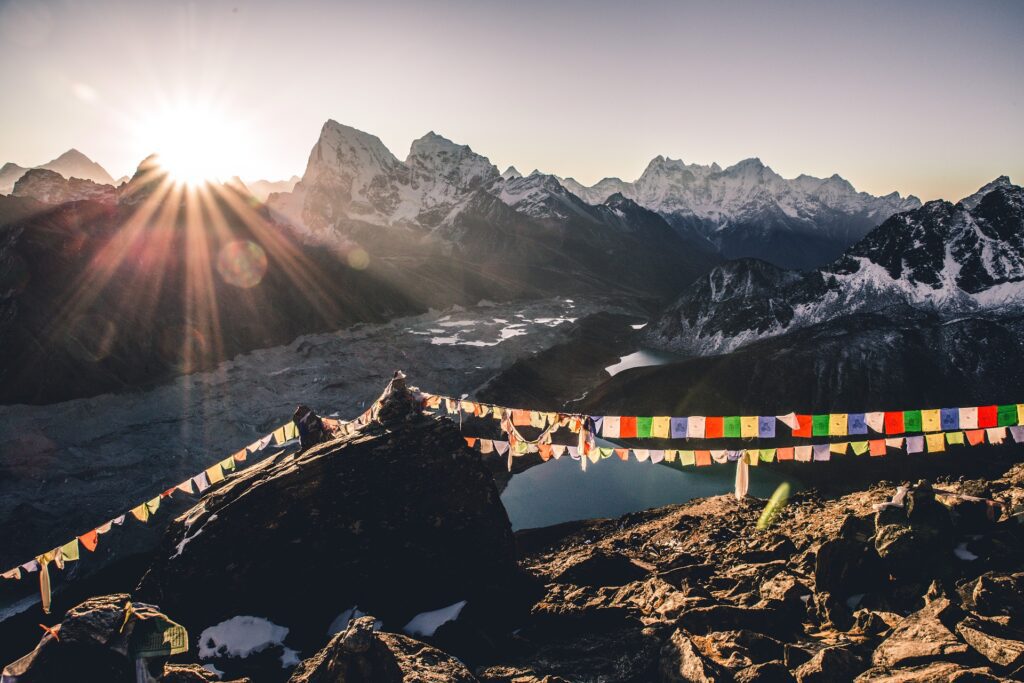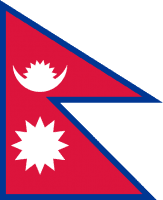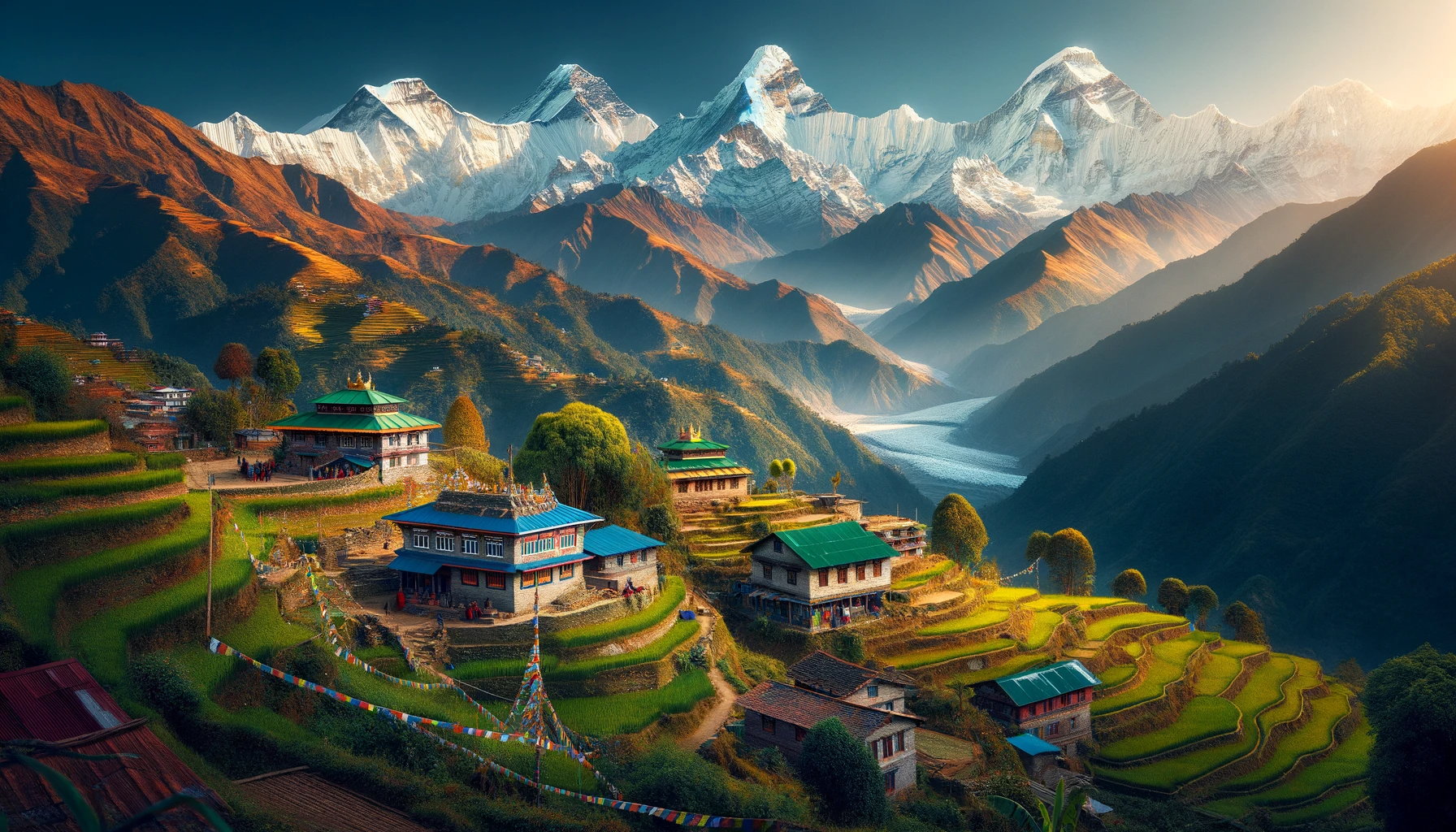Nepal, nestled in the Himalayas between India and China, is renowned for its stunning mountain scenery, including Mount Everest, the highest peak in the world. This landlocked country is not only a trekker’s paradise but also a melting pot of Hindu and Buddhist cultures. With its ancient temples, vibrant festivals, and diverse wildlife in national parks like Chitwan, Nepal offers a rich tapestry of cultural and natural wonders.
List of Public and National Holidays in Nepal for the year 2024
- Prithvi Jayanti: Thursday, 11 January
- Maghe Sankranti: Monday, 15 January
- Martyrs’ Day: Tuesday, 30 January
- Sonam Losar: Saturday, 10 February
- Ghyalpo Losar: Saturday, 10 February
- Prajatantra Diwas: Monday, 19 February
- Maha Shivaratri: Friday, 8 March
- International Women’s Day: Friday, 8 March
- Ghode Jatra *: Monday, 8 April
- Ramjan Edul Fikra: Wednesday, 10 April
- Nepali New Year: Saturday, 13 April
- Ram Navami: Tuesday, 16 April
- Loktantra Diwas: Wednesday, 24 April
- Labour Day: Wednesday, 1 May
- Buddha Jayanti: Thursday, 23 May
- Ganatantra Diwas: Wednesday, 29 May
- Edul Aajaha: Monday, 17 June
- Raksha Bandhan: Monday, 19 August
- Gai Jatra *: Tuesday, 20 August
- Shree Krishna Janmashtami: Monday, 26 August
- Gaura Parba: Monday, 26 August
- Hartalika Teej *: Friday, 6 September
- Nijamati Sewa Diwas *: Saturday, 7 September
- Rishi Panchami *: Sunday, 8 September
- Indra Jatra *: Tuesday, 17 September
- Constitution Day: Thursday, 19 September
- Ghatasthapana: Thursday, 3 October
- Fulpati: Thursday, 10 October
- Maha Ashtami: Friday, 11 October
- Maha Navami: Saturday, 12 October
- Vijaya Dashami: Sunday, 13 October
- Ekadashi: Monday, 14 October
- Dwadashi: Tuesday, 15 October
- Kojagrat Purnima: Thursday, 17 October
- Laxmi Puja: Friday, 1 November
- Govardhan Puja: Saturday, 2 November
- Bhai Tika: Sunday, 3 November
- Chhath Puja: Thursday, 7 November
- Guru Nanak Jayanti *: Friday, 15 November
- Udhauli Parva: Sunday, 15 December
- Christmas Day: Wednesday, 25 December
- Tamu Losar: Monday, 30 December

History
- Ancient Roots: Nepal’s history dates back thousands of years, with early kingdoms and dynasties shaping its early civilization.
- Medieval Era: The Malla kingdoms from the 12th to 18th centuries saw the flourishing of art, culture, and architecture, much of which defines Nepali aesthetics today.
- Unification and Monarchy: In the late 18th century, King Prithvi Narayan Shah unified the various kingdoms into the modern state of Nepal. The Shah Dynasty ruled until the 20th century.
- Democratic Movements: The 20th century witnessed a struggle for democracy, with movements in 1951 and 1990 leading to constitutional changes and the establishment of multiparty democracy.
- Recent History: The early 21st century was marked by a Maoist insurgency, the abolition of the monarchy in 2008, and the declaration of Nepal as a federal democratic republic.
Geography
- Location: Landlocked between India and China (Tibet), Nepal is known for its diverse terrain, which spans from the lowland Terai plains to the rugged Himalayas.
- Mountains: Home to 8 of the world’s 10 highest peaks, including Mount Everest, the tallest on Earth.
- Biodiversity: Despite its small size, Nepal has a high level of biodiversity, including subtropical forests, wildlife like tigers and rhinos, and hundreds of bird species.
Culture
- Ethnic Diversity: Over 100 ethnic groups and castes, each with its own language and culture, including the Sherpas, Newars, Tharus, and Gurungs.
- Religions: Predominantly Hindu, but also with significant Buddhist populations, as well as Islam, Kirat, Christianity, and indigenous practices.
- Festivals and Traditions: Rich in festivals like Dashain, Tihar, and Losar, reflecting its Hindu and Buddhist heritage. Unique traditions, dances, and music are integral to Nepali life.
- Cuisine: Characterized by dishes like dal bhat (lentils and rice), momo (dumplings), and a variety of curries, influenced by both Indian and Tibetan flavors.
Economy
- Agriculture: The mainstay of the economy, employing a large portion of the population, with key crops including rice, maize, and wheat.
- Remittances: A significant source of income, with a large number of Nepalis working abroad.
- Tourism: A vital sector, with the Himalayas, historical sites, and national parks attracting visitors from around the world.
- Challenges: Despite rich natural resources, Nepal faces challenges such as political instability, infrastructure deficits, and poverty.

Politics
- Government: A federal democratic republic with a president as the head of state and a prime minister as the head of government. It has a multi-party system.
- Constitution: Adopted a new constitution in 2015, establishing Nepal as a federal state with provisions for human rights and social justice.
- Political Stability: Has experienced periodic political instability, with frequent changes in government, but continues to work towards stable governance.
Society
- Population: Diverse, with a mix of ethnic groups and languages. A significant portion of the population is rural, though urbanization is increasing.
- Health and Education: Struggles with healthcare access and quality. Education has improved, but challenges remain in terms of quality and accessibility, especially in rural areas.
- Social Issues: Includes poverty, gender inequality, and human trafficking. Efforts are ongoing to address these issues through various governmental and non-governmental initiatives.
Science and Technology
- Focus Areas: Primarily focused on agriculture, healthcare, and environmental conservation. Technology adoption is growing, particularly in telecommunications and information technology.
Arts and Literature
- Literary Tradition: Rich in folklore and classical literature, with contemporary writers increasingly gaining international recognition.
- Visual Arts: Known for its traditional crafts, paintings (like Thanka), and sculptures, reflecting its religious and cultural heritage.
Sports
- Popular Sports: Includes football, cricket, and volleyball. Mountaineering and trekking are also significant, given Nepal’s Himalayan terrain.
- Notable Achievements: Recognized for its mountaineers, with many Sherpas known globally for their climbing skills and records.
International Relations
- Foreign Relations: Maintains a policy of non-alignment and has good relations with neighboring countries and the international community.
- Aid and Development: Receives significant development aid from international donors, which is crucial for its socio-economic development.
Challenges and Prospects
- Economic Growth: Focusing on harnessing natural resources, boosting tourism, and improving agriculture for economic growth.
- Political Stability: Efforts towards stable governance are crucial for sustained development and investment.
- Environmental and Disaster Management: Given its vulnerability to natural disasters, especially earthquakes, efforts in disaster preparedness and environmental conservation are vital.
In summary, Nepal is a country with ancient roots, diverse cultures, and stunning natural beauty, juxtaposed with contemporary challenges and aspirations. It’s a nation where tradition meets modernity, and resilience is woven into the fabric of everyday life. As it continues to navigate political, economic, and social landscapes, Nepal remains a fascinating blend of its past legacies and future possibilities.

